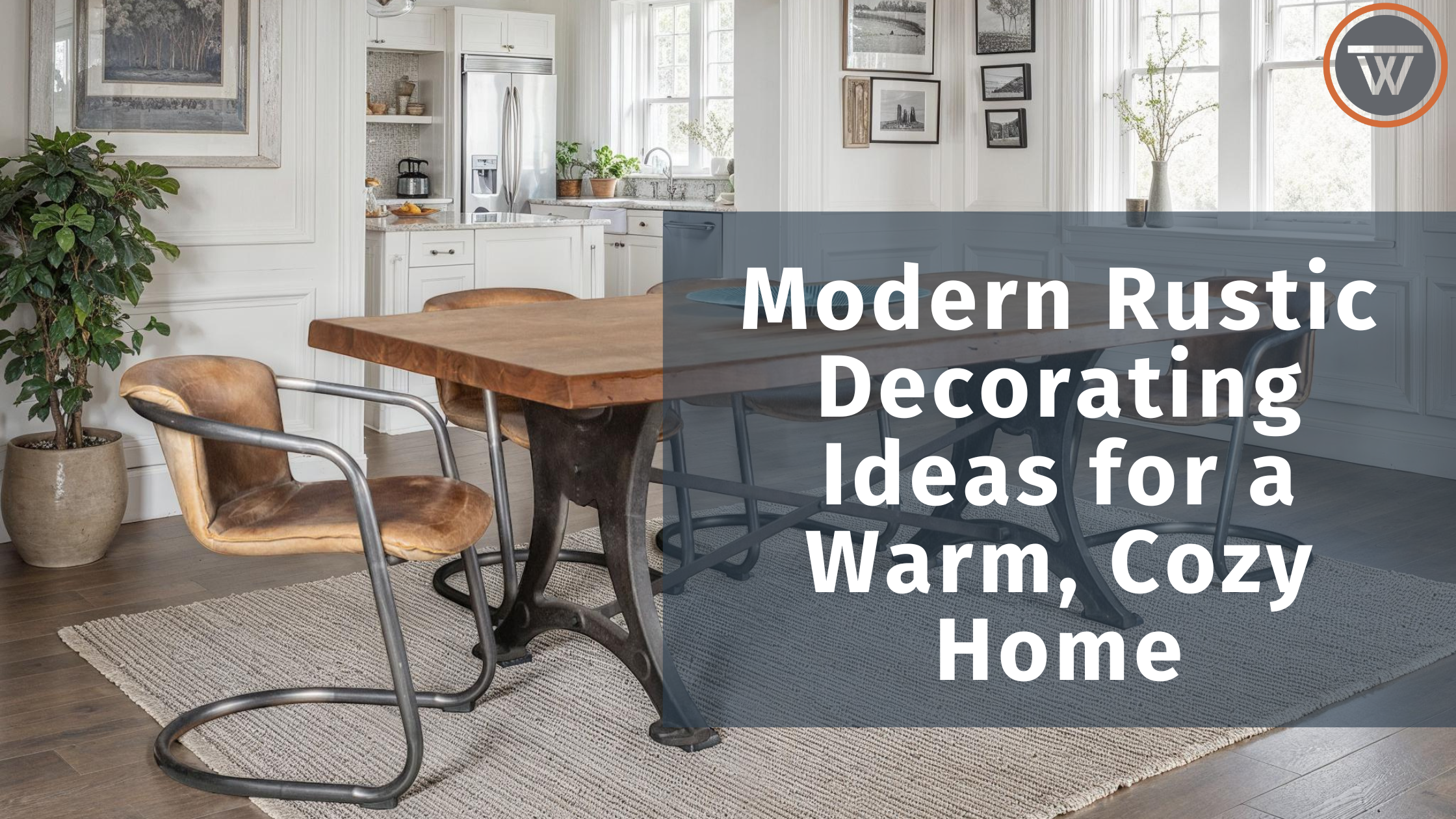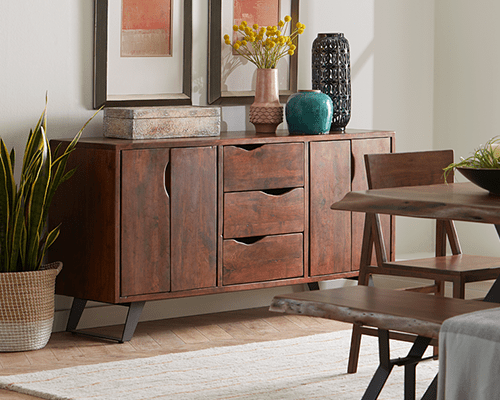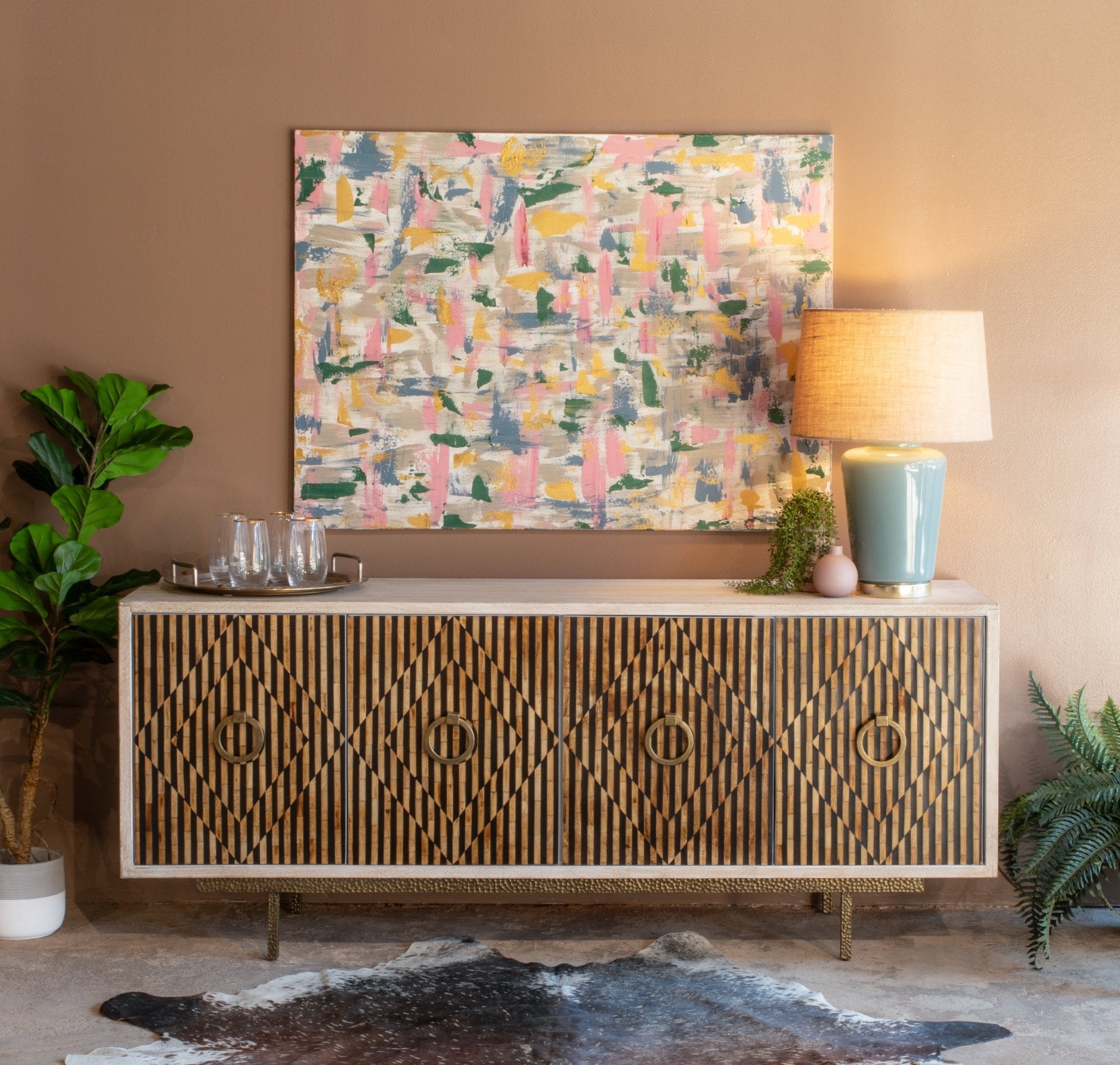Mid Century modern furniture
What's Your Style?
We get it. So many decor ideas, so many styles, so many choices. It can be quite overwhelming. Where should you start? There are many questions you should ask yourself when decorating your home. If you're looking for some help narrowing down the perfect style for your space, you've come to the right place. This article is part of our "What's Your Style?" series, created to help you achieve a Mid-Century Modern aesthetic that's tailored to you.
An uncomplicated, yet fresh style, Mid-Century Modern brings classic styles into the modern age, blending natural and man-made styles to create functional comfort with an elegant aesthetic.
The Origins
Mid-Century Modern was a style popular during, as one might guess, the middle of the twentieth century. It came about as a blend between the German Bahaus movement and the American International movement.
Bauhaus was a style that aimed to reunite fine art with functional design, creating practical pieces with the soul of an artwork. After the Second World War, many Bauhaus artists and architects emigrated to America, taking this style with them. This formed the foundation of what would become Mid-Century Modern.
From Bauhaus style came International, which focused on stripping extra ornaments in favor of showcasing sleek, organic curves and clean lines while still maintaining a formal tone.
New technological advances and experimental materials that came from the war combined with these two design styles to form what we know as Mid-Century Modern. Depleted materials and accelerated rebuilding requirements during the war lead to many prominent architects coming up with novel ways to make the most out of available resources.
Emphasizing clean lines, geometric shapes, and a “form follows function” philosophy, Bauhaus design prioritized simplicity and practicality without sacrificing beauty. As Bauhaus artists and architects brought their ideas to America, they merged with emerging trends, influencing everything from furniture to architecture. This fusion laid the groundwork for Mid-Century Modern, a style that embraced sleek materials, organic forms, and a timeless aesthetic that remains popular today.
Mid-Century Modern defining features: getting the look
Looking to make your space feel like a Frank Lloyd Wright house? Here's some of the main aspects that defines-Mid Century Modern:
- An emphasis on functionality. The form will follow the function.
- Uncluttered, sleek lines with both organic and geometric forms
- Minimal ornamentation & lighter, airier spaces (though not as light and airy as minimalism)
- An exploration of different traditional as well as non-traditional materials
- The juxtaposition of different, and sometimes contrasting materials
Don't feel like you have to incorporate all these features. It's always important to create a space you feel proud to call home. We do recommend including a few of these elements into your space if you want it to exhibit a Mid-Century Modern aesthetic.
Form
Mid Century Modern brings nature into the home.
Large windows allow natural light to flood the space, creating a light, airy feel. At the time, this was an incredibly novel idea, as older homes had darker, more cramped interiors.
Be smart with your space! Oftentimes, less is more with this style. Don't feel like you need a piece to occupy space in every room. Remember that function is paramount when furnishing in this style; if it doesn't serve a purpose, throw it out.
Function
Mid Century Modern is a style that, much like Industrial Modern, puts function before all else. Every piece in a space should serve a purpose, and some may serve multiple.
Clean lines, organic shapes, and minimal ornamentation define the look, ensuring that beauty and practicality go hand in hand. Multi-functional furniture, like storage-packed coffee tables or sleek modular sofas, embodies the era’s innovative spirit. Materials such as rich solid woods and metal further enhance the balance between form and function, creating spaces that feel both stylish and effortlessly livable.
Consider adding compact or stack-able pieces to aid the aesthetic -- many mid century homes would have these accents in order to conserve space. Nesting tables like our Leonardo Side Tables are another great choice that add a unique flair to your space!
Mid-Century Modern style is all about clean lines and sleek curves. Pieces can either have a organic or geometric form, though organic forms tend to be more prominent. Consider adding a piece with a striking form as the centerpiece of the room.
Materials
Just like any other style, don't put as much emphasis into incorporating all of these materials into your space. Instead, opt for just a few select materials to use as staple materials throughout your home. If you're unsure of what materials to settle on, you can never go wrong with wood and iron. Then, add splashes of color with plastic pieces or incorporate some plexiglass accent pieces to add interesting dashes of character within the space.
texture
Mid-Century Modern furniture typically uses materials with smooth finishes, clean lines, and organic curves. The textures mimic the materials in that they fuse the organic, free-form curves found within nature with the clean lines and smooth finishes of manufactured pieces.
A point to remember is that this is a just a design style, not a law. It can be broken. Want to add an industrial coffee table with a rough, weathered texture to it? Go for it! Just be careful - going overboard can take away from the overall aesthetic more than it will add to it.
If you enjoy fusing styles, consider adding an industrial flair to your mid century home by adding a crank table as a centerpiece for your dining room or a sleek coffee table in your living room to add some contrast in textures within the space.
color
The color palette for a Mid-Century modern theme is rather wide, from neutral to bold, black and white to fuchsia and candy-apple red.
For more contemporary spaces, opt for more muted colors.
That being said, don't be afraid to add splashes of bold colors. These accents can act as a great way to insert your personality within your space.
Vibrant hues like mustard yellow, teal, or burnt orange can breathe life into an otherwise neutral space, adding warmth and energy. Whether through throw pillows, statement chairs, or eye-catching wall art, these pops of color create visual interest without overwhelming the clean, functional aesthetic of Mid-Century Modern design.
Looking to Add some Mid Century Modern Style to Your Space? Here's Some Tips:
- Do not feel the need to make your room a period piece/time capsule. Consider incorporating a few Mid-Century Modern pieces to drive and define the space.
- Incorporate some graphic patterns into the space. Many companies started in this era still have patterns from that period that are updated for a more contemporary look.
- Add lighting that has a sculptural, artistic form but retains functionality.
- Add period art and accents. You can never go wrong with a Andy Warhol reproduction or a Jackson Pollock print.
other articles you might like
Join our newsletter
Your email address will not be published.















